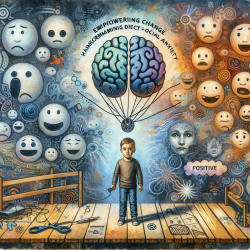Stuttering in preschool children presents a unique challenge to speech therapists, demanding a nuanced understanding of its early manifestations and contributing factors. The research article "Natural Histories in Preschool Children Who Stutter" by Pat Wevrick, MA, offers invaluable insights into this phenomenon, providing a solid foundation for therapists aiming to refine their intervention strategies.
Understanding the Early Signs
The study's examination of preschool children referred for stuttering assessment underscores the importance of early identification. Key findings indicate that children who stutter often exhibit developmental and health factors distinct from their non-stuttering peers. These include delayed toilet training, delayed walking, and a higher incidence of illnesses such as frequent colds, ear infections, and allergies. Recognizing these signs can prompt earlier intervention, potentially mitigating the stuttering's impact.
The Role of Social and Environmental Factors
Another significant contribution of this research is the highlighting of social factors in the lives of children who stutter. Events such as the birth of a sibling or moving to a new home were found to be more prevalent among children diagnosed with stuttering. This finding suggests that speech therapists should adopt a holistic approach, considering not only the child's speech patterns but also their social and environmental contexts.
Implications for Speech Therapy Practice
The study's insights have profound implications for speech therapy practice. Firstly, it emphasizes the need for therapists to conduct thorough assessments that go beyond speech fluency, including developmental milestones and health history. Secondly, it suggests that intervention strategies should be flexible, personalized, and responsive to the child's broader life context. Lastly, it underscores the importance of parental involvement, as understanding and adjusting the child's environment can be crucial for therapy success.
Further Research and Continuing Education
While the study offers compelling findings, it also opens avenues for further research. Speech therapists are encouraged to stay abreast of ongoing studies in this area, contributing to a deeper understanding of stuttering's complexities. Continuing education, through workshops, webinars, and conferences, remains an invaluable tool for practitioners seeking to enhance their skills and knowledge base.
In conclusion, "Natural Histories in Preschool Children Who Stutter" provides critical insights that can enhance the effectiveness of speech therapy for young children. By integrating these findings into practice, therapists can offer more targeted, impactful intervention, supporting children to overcome stuttering and achieve fluent speech.
To read the original research paper, please follow this link: Natural Histories in Preschool Children Who Stutter.










